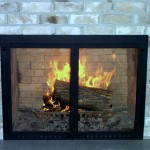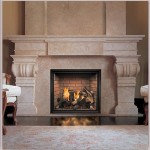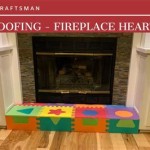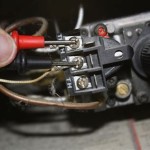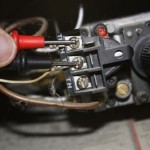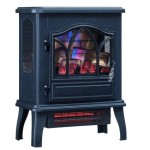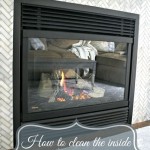The Allure and Functionality of Gothic Arch Fireplace Screens
Fireplace screens serve a crucial dual purpose: they enhance the aesthetic appeal of a hearth while simultaneously providing a vital safety barrier, preventing sparks and embers from escaping into the room. Among the various designs available, the Gothic arch fireplace screen stands out due to its historical roots, elegant form, and ability to complement a wide range of interior styles. This article explores the design elements, practical considerations, and historical context surrounding Gothic arch fireplace screens, providing a comprehensive understanding of their enduring appeal.
The Gothic arch, a defining characteristic of Gothic architecture, is a pointed arch typically found in cathedrals, castles, and other structures built during the medieval period. Its structural efficiency allowed for taller and more expansive buildings, characterized by soaring heights and large windows. Applying this arch to a fireplace screen introduces a touch of historical grandeur and visual interest. The shape inherently draws the eye upwards, creating a sense of verticality and elegance that can transform the entire fireplace area.
Beyond aesthetics, the Gothic arch design offers practical advantages. The pointed arch is structurally sound, allowing for a wider screen without compromising stability. This wider screen provides greater coverage, protecting a larger area from potential hazards. The shape also often allows for intricate detailing within the screen’s framework, further enhancing its decorative value.
Gothic arch fireplace screens are manufactured from a variety of materials, each offering distinct advantages in terms of durability, heat resistance, and aesthetic characteristics. The most common materials include wrought iron, steel, and brass. Wrought iron, known for its strength and malleability, is often used to create elaborate designs. Steel offers similar strength and durability, while brass provides a warmer, more luxurious appearance. The choice of material largely depends on the desired aesthetic and the overall decor of the room.
The mesh used in the screen is another critical component. It must be fine enough to contain sparks and embers while allowing for adequate airflow. Common materials for the mesh include woven steel and expanded metal. Woven steel offers a classic look and excellent durability, while expanded metal provides a more modern appearance and is often more cost-effective. The mesh is typically coated with a heat-resistant finish to prevent corrosion and ensure longevity.
Design Elements and Aesthetic Considerations
The design possibilities for Gothic arch fireplace screens are virtually limitless. The arch itself can be simple and understated or highly ornate, featuring intricate scrollwork, finials, and other decorative elements. Many screens incorporate floral motifs, geometric patterns, or heraldic symbols, reflecting the rich history of the Gothic style. The finish of the screen also plays a significant role in its overall appearance. Common finishes include black, bronze, antique brass, and powder-coated colors.
The choice of design elements should complement the architectural style of the home and the existing décor. A more traditional home might benefit from a screen with classic Gothic motifs and a darker finish, while a more contemporary space could accommodate a screen with a simpler arch and a lighter, more modern finish. Consideration should also be given to the size and scale of the fireplace. A large fireplace can handle a more elaborate screen, while a smaller fireplace might require a more streamlined design.
The color of the screen can also be used to create a specific mood or atmosphere. Darker colors, such as black or bronze, tend to create a more dramatic and formal feel, while lighter colors, such as antique brass or silver, can brighten the room and create a more inviting atmosphere. The finish can also be selected to match other metal accents in the room, such as light fixtures or decorative hardware, creating a cohesive and harmonious look.
Furthermore, the presence or absence of doors on the screen impacts both aesthetics and convenience. Screens with doors allow for easy access to the fire for tending to the logs, while screens without doors require the entire screen to be moved. The decision depends on personal preference and the frequency with which the fire is used.
Practical Considerations and Safety Aspects
Beyond aesthetics, the primary function of a fireplace screen is to prevent sparks and embers from escaping the fireplace, protecting the surrounding area from potential fire hazards. A well-designed and properly installed screen significantly reduces the risk of accidental fires, making it an essential safety feature for any home with a working fireplace. The screen must be large enough to completely cover the fireplace opening, with no gaps or openings that could allow sparks to escape.
The mesh must be made of a fire-resistant material and be fine enough to contain even the smallest embers. Regular inspection of the screen is crucial to ensure that the mesh is intact and that there are no signs of damage or wear. Any damaged areas should be repaired or replaced immediately to maintain the screen’s effectiveness. The screen should also be positioned at a safe distance from the fire to prevent overheating, which could damage the screen or the surrounding materials.
The stability of the screen is another important consideration. The screen should be sturdy enough to withstand accidental bumps or knocks without tipping over. This is particularly important in homes with children or pets. Some screens come with adjustable feet or mounting brackets that can be used to secure the screen to the floor or wall, providing added stability. It is also important to ensure that the screen is placed on a level surface to prevent it from wobbling or tipping.
Cleaning the screen regularly is also vital to maintain its appearance and functionality. Dust, soot, and creosote can accumulate on the screen over time, reducing its effectiveness and making it more difficult to see the fire. The screen can be cleaned with a soft brush or vacuum cleaner attachment. For more stubborn stains, a mild detergent and water can be used. Be sure to dry the screen thoroughly after cleaning to prevent rust or corrosion.
Historical Context and Evolution of Fireplace Screens
The history of fireplace screens dates back several centuries, with early examples serving primarily as drafts protectors rather than spark guards. These early screens were often made of wood or fabric and were designed to shield individuals from the harsh drafts that were common in poorly insulated homes. As heating technology improved and homes became more airtight, the focus shifted to preventing sparks and embers from escaping the fireplace.
The development of metalworking techniques allowed for the creation of more durable and fire-resistant screens. Wrought iron became a popular material, as it was strong, malleable, and could be easily shaped into intricate designs. The Victorian era saw a surge in the popularity of ornate fireplace screens, often featuring elaborate scrollwork, floral motifs, and other decorative elements. These screens were seen as status symbols and were often displayed prominently in the home.
The Gothic Revival movement of the 19th century further influenced fireplace screen design, leading to the incorporation of Gothic arches, pointed windows, and other architectural details. These screens were often designed to complement the Gothic Revival style of the home, creating a cohesive and harmonious look. The 20th century saw a shift towards simpler and more functional designs, with a greater emphasis on safety and efficiency. Modern fireplace screens are often made of steel or other durable materials and feature a clean, minimalist aesthetic.
Despite these changes, the Gothic arch fireplace screen has remained a popular choice, thanks to its timeless elegance and historical appeal. It continues to be a versatile design element that can complement a wide range of interior styles, from traditional to contemporary. The Gothic arch represents a fusion of form and function, providing both safety and aesthetic beauty to the hearth.
Choosing a Gothic arch fireplace screen involves considering the size of the fireplace opening, the overall design of the room, and the desired level of safety and functionality. With careful consideration, a Gothic arch fireplace screen can become a stunning focal point in any home, adding a touch of historical grandeur and providing years of enjoyment and safety.

Pleasant Hearth Gothic Fireplace Screen

Pleasant Hearth 633 Gothic Steel Fireplace Screen Black Com

Style Selections 47 87 In Black Steel Gothic Arch 3 Panel Fireplace Screen 15193 Réno Dépôt

Gothic Cathedral Fireplace Doors Thak Ironworks Www Ca150 150search By As The Name Implies These Home Decor

Victorian Arched 3 Panel Fireplace Screen Gothic Spark Safety Hearth Black Steel

Pleasant Hearth Arched 3 Panel Fireplace Screen The Home Depot

Pleasant Hearth Gothic Fireplace Screen At Tractor Supply Co

Pleasant Hearth Gothic Fireplace Screen

Pleasant Hearth 959 Arched Fireplace Screen Black Com

Pleasant Hearth Gothic Fireplace Screen 633 Doors
Related Posts

